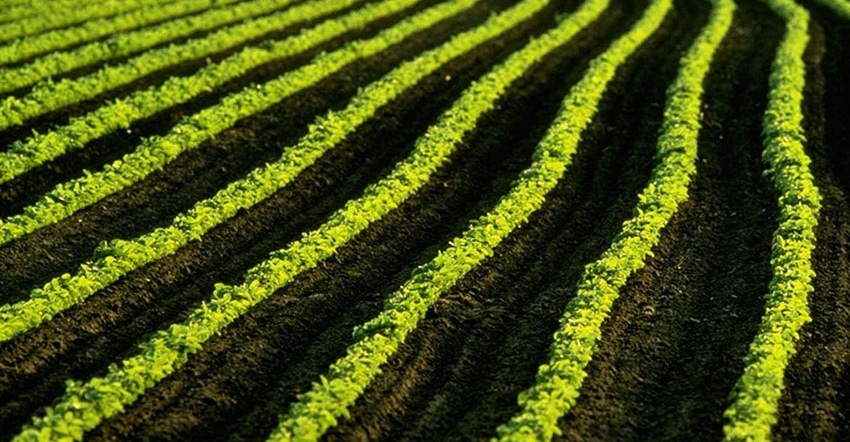
After trading in a very quiet trading range for much of May, soybean futures finally broke out of that range with a twenty-five cent price rally. The market was supported by news of steady export sales to China, as well as a lower U.S. Dollar. Soybean futures prices continue to be in an uptrend for the moment, waiting for fresh data from today’s USDA report for next potential price direction.
Monitor soybean export demand
In today’s report, traders will tune into export demand. In April, the USDA had 2019/20 soybean exports pegged at 1.775 billion bushels. That number was lowered on the May report to 1.675 billion bushels. Many in the industry feel the export number may indeed be lowered again on the upcoming report, as export sales are lagging against USDA projections.
Regarding 2020/2021 soybean export demand, there is a more optimistic tone. The USDA feels exports will be more robust in the coming year with exports expected at 2.05 billion bushels as reported on the May WASDE report.
Will we see an adjustment to 2019/20 crop supply?
Also in today’s report, we will get an update on 2019/20 production totals as the farm data from North Dakota (surveyed again due to their late harvest) will be included on this report. On the May 12 report, 2019/20 production was pegged at 3.557 billion bushels. Looking ahead to new crop production, acres will not be updated until the June 30th Planted Acreage report. The current estimate of soybean planted acres is 83.5 million acres based on the March 31 Planting Intentions report. And for the most part, planting progress is going quite well, with 86% of the crop now planted as of June 7th. However, one little nugget of news jumped out at me on this week’s crop progress report. Only 74% of the soybeans are planted in North Dakota.
North Dakota soybean acres
About 26% of the soybeans in North Dakota still need to be planted, and yesterday was the state’s prevent plant date deadline. The soil conditions are still soggy for many parts of that state, leaving many to wonder if farmers there will opt for prevent plant, leaving 26% of expected acres unplanted.
This is a significant number, as North Dakota is the 4th largest soybean state in the nation.
In 2020, they were expected to plant 6.6 million acres of soybeans. If 26% of those acres are not planted, that equates to 1.716 million acres of soybeans NOT planted. If those acres do not get planted, that will affect new crop ending stocks, providing the impression that ending stocks might be getting smaller.
The other important factor about North Dakota soybeans is that they are important for shipping out the Pacific Northwest. According to the North Dakota soybean council, 72% of the soybeans grown in North Dakota are exported out the PNW, and 80% of the soybeans shipped out of the PNW are destined for China.
The soybean story may just be getting started. Keep an eye on exports, and both old and new crop production numbers.
Reach Naomi Blohm: 800-334-9779 Twitter: @naomiblohm and [email protected]
Disclaimer: The data contained herein is believed to be drawn from reliable sources but cannot be guaranteed. Individuals acting on this information are responsible for their own actions. Commodity trading may not be suitable for all recipients of this report. Futures and options trading involve significant risk of loss and may not be suitable for everyone. Therefore, carefully consider whether such trading is suitable for you in light of your financial condition. No representation is being made that scenario planning, strategy or discipline will guarantee success or profits. Any decisions you may make to buy, sell or hold a futures or options position on such research are entirely your own and not in any way deemed to be endorsed by or attributed to Total Farm Marketing. Total Farm Marketing and TFM refer to Stewart-Peterson Group Inc., Stewart-Peterson Inc., and SP Risk Services LLC. Stewart-Peterson Group Inc. is registered with the Commodity Futures Trading Commission (CFTC) as an introducing broker and is a member of National Futures Association. SP Risk Services, LLC is an insurance agency and an equal opportunity provider. Stewart-Peterson Inc. is a publishing company. A customer may have relationships with all three companies. SP Risk Services LLC and Stewart-Peterson Inc. are wholly owned by Stewart-Peterson Group Inc. unless otherwise noted, services referenced are services of Stewart-Peterson Group Inc. Presented for solicitation.
The opinions of the author are not necessarily those of Farm Futures or Farm Progress.
About the Author(s)
You May Also Like






